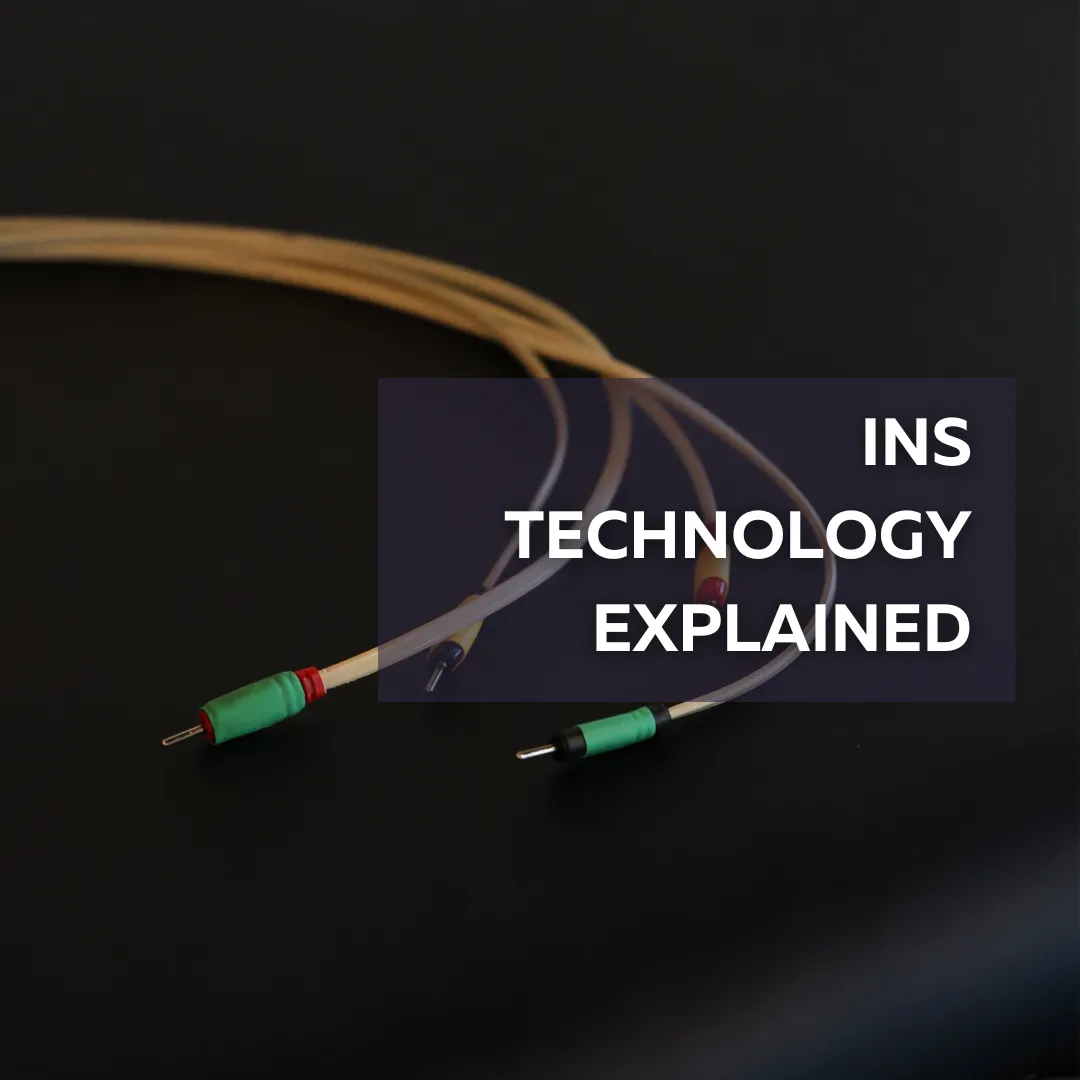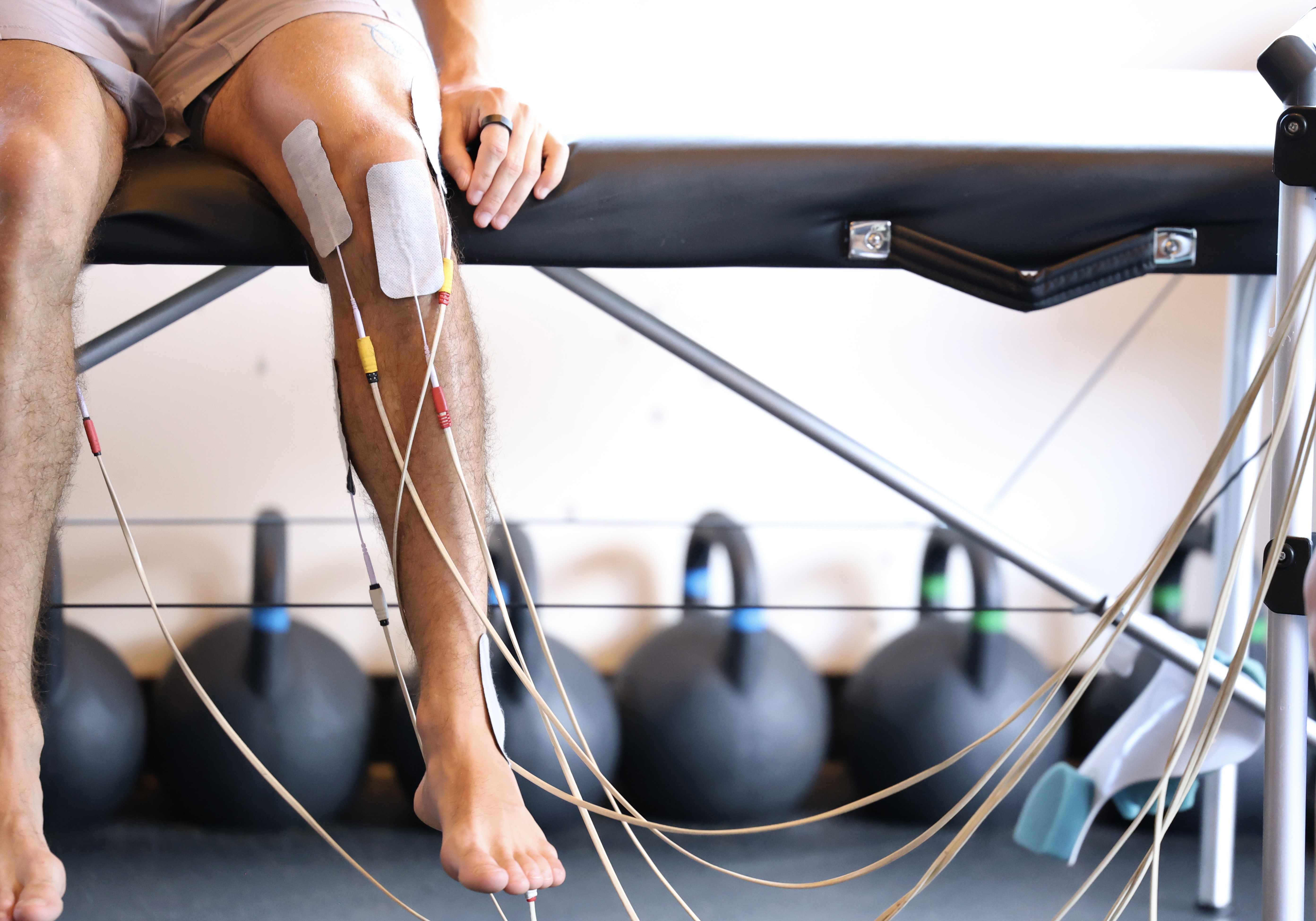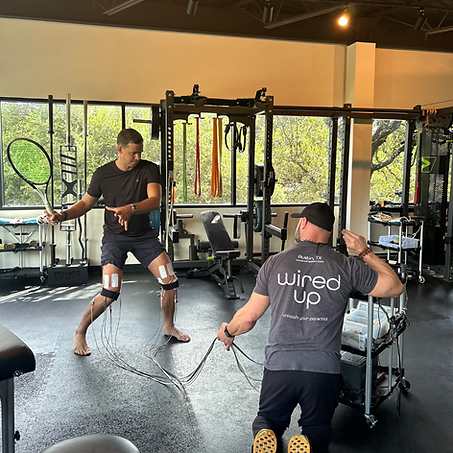
Interactive Neuromuscular Stimulation (INS) Technology Explained
When you first step into Wired Fitness and Rehab, it feels like stepping into the future. Cords stretch from people’s clothes, pads are attached to clients' backs, arms, and legs, and a small box glows bright blue on a cart next to the neuromuscular rehabilitation specialist.
You might wonder, what exactly does that little box do? And why does this machine work so well?
Let’s dive into it!

How Does the Nervous System Work?
To understand INS technology, we first need to understand the nervous system. Neurons, the fundamental units of the nervous system, communicate through electrical and chemical signals. Electrical signals travel from neuron to neuron or neuron to other cells in the body, facilitating communication.
Imagine you hold your hand over a hot stove. Sensory receptors in your hand pick up the heat and relay it to neurons, which send the message up to your brain. Your brain processes this information and sends a signal back through neurons telling your hand to move. This rapid response is thanks to the electric currents that relay information at lightning speed, allowing your body to react to immediate threats.
What is INS Technology?
INS technology, or Interactive Neuromuscular Stimulation Technology, leverages this electrical communication system. It connects the brain to the muscles by supplying its own electrical stimulation. Unlike traditional neuromuscular electrical stimulation machines like TENS, INS technology uses two alternating waveform

currents. One mimics the brain’s signal, while the other induces a calm parasympathetic state, resulting in a smoother buzz. These currents work together to identify areas where the body’s normal electrical signal is disrupted due to injury, deficiency, or compensation. Then, using the supplied electrical signal, it restores the proper pattern.
How Does It Work?
Your body relies on electrical signals from the brain to function. When you want to contract a muscle, your brain sends an electrical signal to the muscle. However, sometimes that signal can be blocked or deficient, causing pain, mobility issues, and other conditions. INS technology first calms the system, then mimics the brain’s signal to eliminate blockages, similar to unkinking a hose to restore water flow. Once a proper neuromuscular signal is established, a series of exercises provide neuromuscular re-education, reinforcing the proper pattern and increasing blood flow for healing.

What We Use It For
At Wired Fitness and Rehab, we use INS technology for rehabilitation, training, and mental health.

Rehabilitation: Traditional physical therapy often requires repeating exercises hundreds of times to cement proper patterns. INS technology maps the body to find deficient areas and restores neuromuscular function immediately. By applying direct input with functional exercises, recovery time can be reduced by 70%.
Training: INS technology provides direct proprioception to a muscle, allowing full activation. Muscles can safely fully lengthen and contract, enabling a maximal effort workout that is four times more effective than usual.
Mental Health: Stress, anxiety, and emotional distress put you in a sympathetic "fight or flight" state. By tapping into the vagus nerve, INS technology can shift you from this sympathetic state to a calm parasympathetic state, relieving the fight or flight response.
INS technology looks futuristic because it is! By directly interacting with the system that allows the body to function, we can enhance recovery and training, and rewire the body to operate at its best.
Want to try it for yourself? Schedule your first session here.
